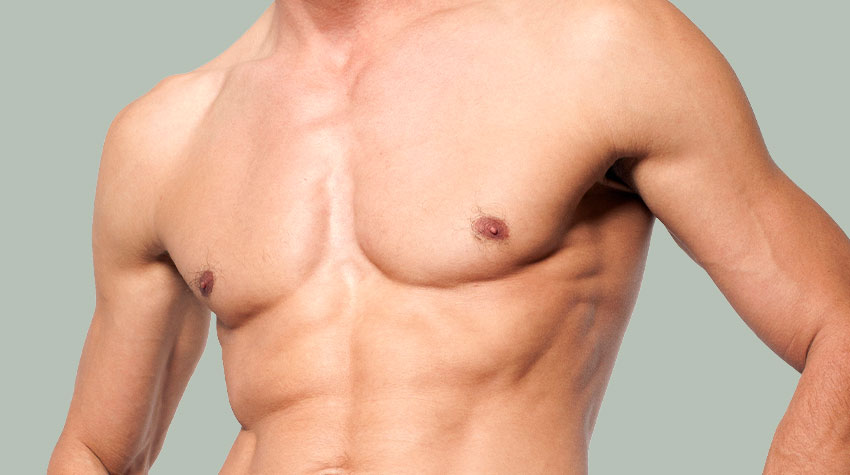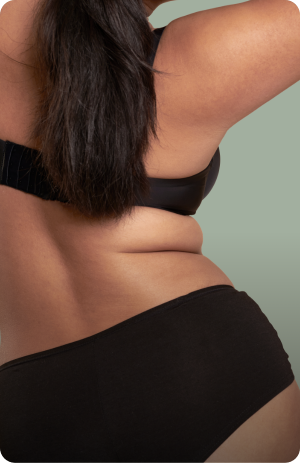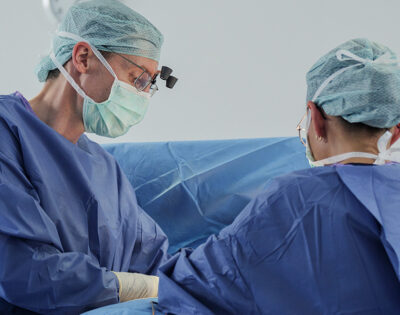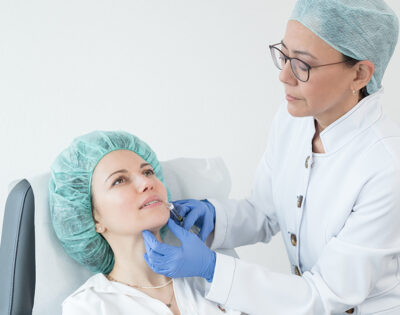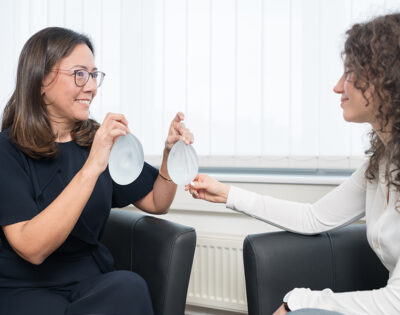Treatment of gynecomastia – back to an attractive man’s chest
The correction of enlarged male breasts is one of the most common plastic surgeries performed on men.
Would you like to feel comfortable in all T-shirts again? Do you find your breasts unsightly or even annoying and have already tried in vain to improve them through diet and exercise? Choosing the right surgical technique is crucial for a good result.
On this page you will find all the information you need on the surgical treatment of gynecomastia.
Opt for a breast that you feel completely comfortable with:
- Upper body free again at last; whether on vacation or for your partner
- Bringing the body into balance through the right proportions
- Increase attractiveness
- Barely visible scars, rapid regeneration and firmer breasts
What our patients say
Information at a glance
Operation duration
4 hours
Anesthesia
Twilight sleep
Hospitalization
Outpatient
Costs
Aftercare
6 weeks
Thread tension
Self-dissolving threads
Socially acceptable
after 5 days
Additions or alternatives
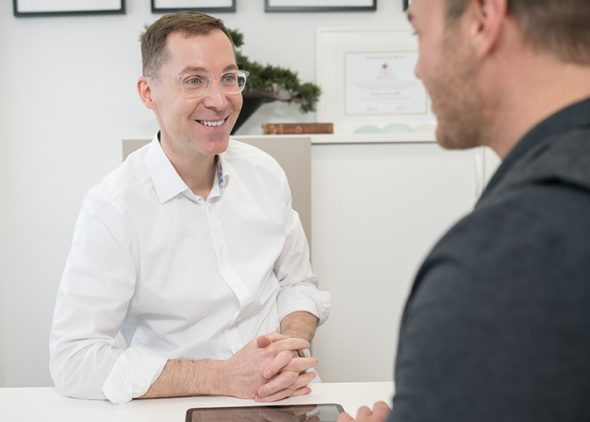
What is gynecomastia?

A man’s breast is usually caused by both increased mammary gland tissue and increased subcutaneous fatty tissue. Vibratory liposuction is a very gentle and safe procedure for removing excess fatty tissue. A palpable enlargement of the breast tissue of two centimeters or more in diameter is referred to as gynecomastia.
The male glandular tissue is very firm and therefore cannot be suctioned out. It contains no glandular lobes, but glandular ducts that open into the nipple. The mammary gland tissue is removed via a small skin incision at the lower edge of the areola. Only in special cases should the removed tissue be examined histologically (family history of breast cancer, congenital chromosomal disorder, unilateral gynecomastia). The procedure can be performed very gently with targeted anesthesia of the intercostal nerves. Thanks to the so-called rapid recovery procedure, you will be back home a few hours after the procedure and will recover better and faster.
1. pectoralis major muscle (pectoralis major muscle)
2nd third rib
3. subcutaneous fatty tissue
4. intercostals, nerve and vessels
5. dense glandular tissue
6. pleura
1. regions of contouring for HD liposculpture
2.
Intermediate ribs, nerve and vessels
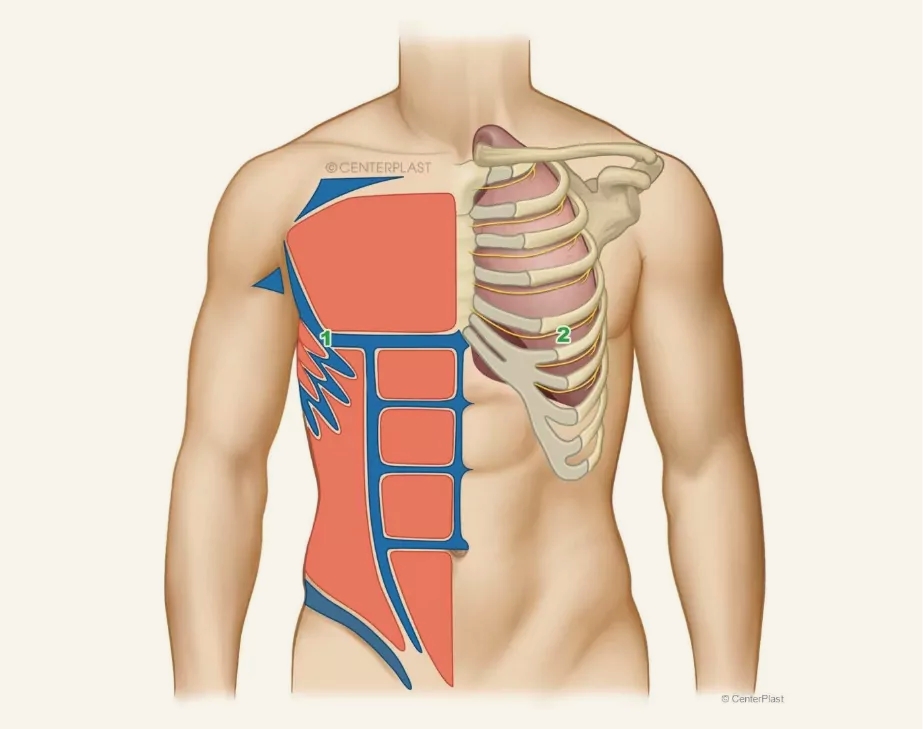
What treatment methods are available for gynecomastia?
There are various forms of gynecomastia. There are also many terms relating to the female breast base in men (e.g. B. Pseudogynecomastia(lipomastia)). We will be happy to advise you on your options in a personal meeting.
As a rule, a combination of several surgical procedures makes sense. Liposuction is best performed using the vibration method (SAFELipo technique). The specialist in plastic and aesthetic surgery can remove the enlarged solid glandular body of the man through an inconspicuous, small incision at the lower edge of the areola. If only very little breast glandular tissue is present, an attempt can be made to avoid the skin incision at the edge of the male areola. Experience shows that in the case of true gynecomastia, the combination of removing the enlarged mammary gland and liposuction provides harmonious and very satisfactory results, so that the breasts no longer look feminine. After liposuction with the vibration method, the skin shrinks in the months following gynecomastia surgery.
The extent to which the skin regresses depends on the following factors, among others:
- Age
- Permanent exposure to sunlight
- Tobacco smoking, predisposition
- Concomitant diseases
- certain medications
- and severity of the enlarged breast.
In young, healthy men, an attempt can be made to do without the additional scar of the tightening. If you are still suffering from excess skin after six months, a moderate tightening can be carried out without complications, on an outpatient basis and under local anesthetic. Partial regression of the skin also offers the advantage that a smaller incision is sufficient for correction. There are various techniques for removing excess skin, depending on its extent. Some excess skin can be removed from around the male areola. In the case of sagging and large breasts that may look feminine, it is necessary to relocate or transplant the nipple.
Procedure for gynecomastia surgery
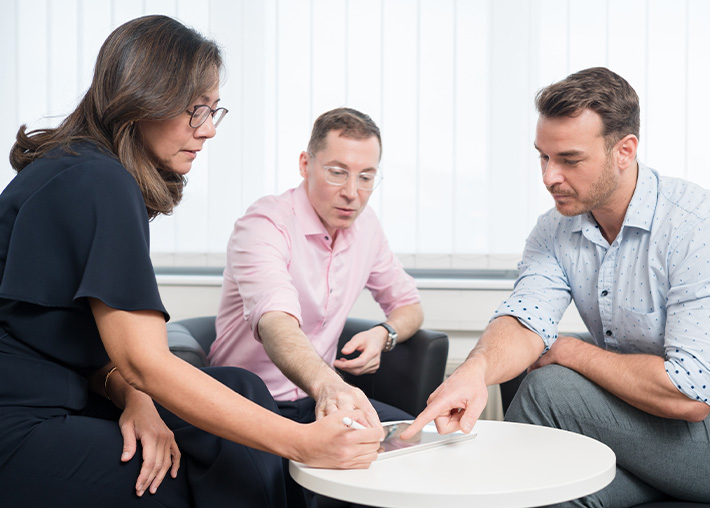
Preparation
Every operation is prepared with the utmost care by the plastic surgeon. This means that several safety checks are routinely carried out to ensure that male breast reduction surgery is performed under the best possible conditions. The surgeon checks again that all your questions have been answered.

The OP
The doctor marks the area of skin to be treated on the undressed upper body with a waterproof pen. The marked surgical plan is used for control and better orientation during the operation in order to restore the planned natural shape. You will then be taken to the operating theater. There, the team consisting of your plastic surgeon, a surgical assistant, the anesthesiologist, a surgical nurse and a technical assistant will take care of you. Care is taken to ensure that you lie comfortably on a specially padded operating table.
A little background music can take away your anxiety and reduce the sensation of pain. You will be given medication that will put you into a light or deep sleep (general anesthesia).
During general anesthesia, the surgical area is thoroughly disinfected several times. Sterile, pathogen-proof drapes are applied to the skin to protect the surgical field on all sides. To ensure that you do not feel any physical pain after the procedure, the specialist anaesthetist will administer a long-lasting, effective anaesthetic. The water solution, which is injected into the subcutaneous tissue, contains adrenaline. This reduces blood loss and prevents the formation of bruises. Excess fatty tissue is suctioned out using very fine cannulas. The solid glandular tissue of the male breast is removed via an arched incision at the edge of the areola. Small vessels are obliterated. If necessary, the excess skin is removed.
The wounds are sutured with self-dissolving skin sutures. The specialist in aesthetic surgery then critically checks once again whether the result is beautiful and symmetrical. Finally, after the plastic surgery treatment, a sterile dressing is applied and the compression girdle is fitted. Depending on the extent of the true gynecomastia, the surgery takes between one and a half and two and a half hours.

After the procedure
You will be taken to a relaxation room where your well-being will be continuously monitored. If you feel well, you can have a drink or a snack. As a rule, you can be picked up four to six hours after the operation. The doctor gives approval for this after a check.
Before you are taken home, you will have a personal consultation: The surgeon will tell you how the operation to reduce the enlarged breast went in detail.
You will also receive a detailed report. The behavioral measures are listed in detail and the dates of the check-ups are noted. The report also contains the personal telephone number of the cosmetic surgery specialist, who is available for you around the clock. The surgeon will contact you the evening after the operation to check how you are feeling and to rule out any unusual swelling or pain.
Are scars visible after gynecomastia surgery?
The scars left by a male breast correction are usually very inconspicuous. During liposuction, a three millimeter incision is required on the side of the chest to remove excess fatty tissue. Access is slightly offset to the right and left. Even small and barely visible scars do not give the impression of a planned operation.
The tissue of the male mammary gland is removed via an arched skin incision at the edge of the areola. The scar between the areola and the breast skin is usually barely visible. A moderate tightening of the skin leaves a circular scar around the areola. The removal of severely sagging and loose skin after significant weight loss requires a nipple transfer or grafting. The aesthetic units of the male breast and the skin tension lines must be taken into account. The transverse scars fade after six to nine months. We would be happy to advise you individually on this topic.
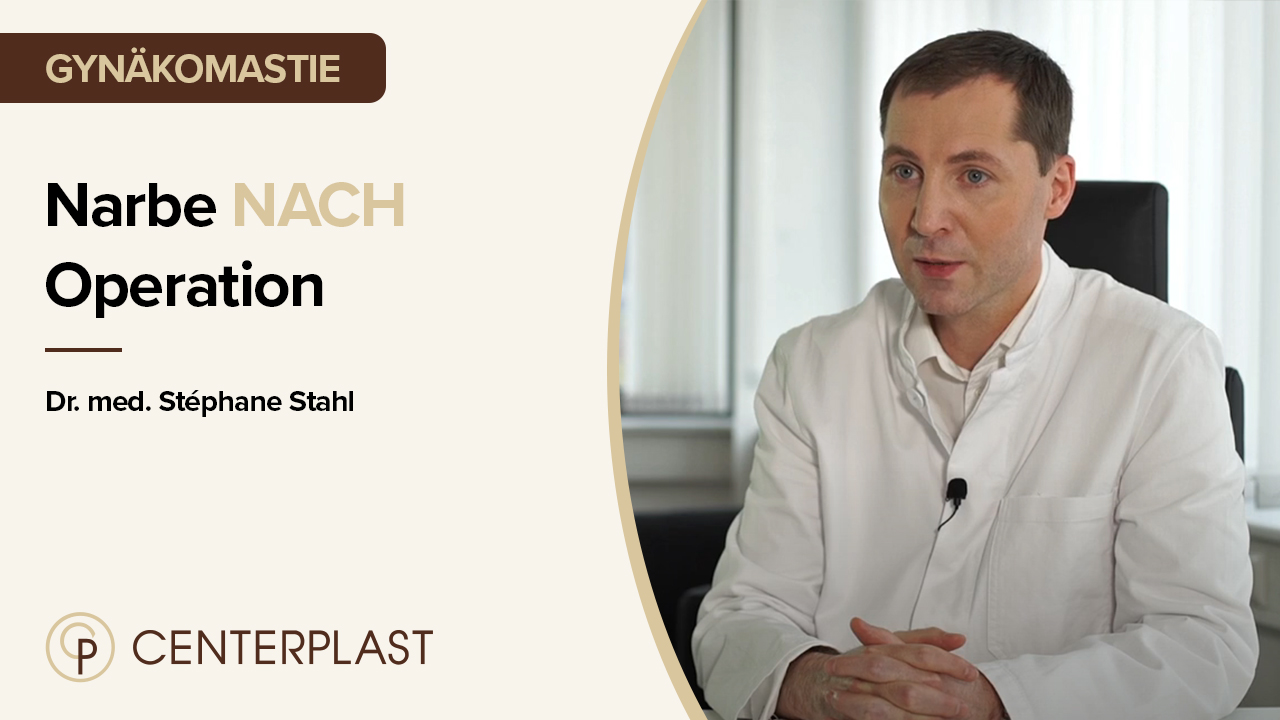
What are the eight benefits of gynecomastia correction?
- Correction of gynecomastia can restore a normal body image in affected men, so that they can then refrain from wearing extra-wide clothing such as oversized T-shirts.
- The correction of gynecomastia usually leaves hardly any visible scars afterwards.
- Removal of the mammary gland improves or eliminates breast pain.
- Correcting gynecomastia can significantly improve the overall quality of life 1 .
- Correction of gynecomastia provides faster, more effective and aesthetically better results than medical treatment 2 .
- Most male breast reductions are performed on an outpatient basis.
- Gynecomastia surgery is associated with minor absence from education or work.
- There is no risk of the male breast recurring, so the suffering can be effectively ended. An effective and sustainable before-and-after change.
Before and after examples of gynecomastia correction
In addition to testimonials, men who are interested in gynecomastia surgery also attach great importance to before and after photos. Such films may not be shown on the Internet in Germany. However, it is possible to do this during a personal consultation. This is of course done in compliance with the data protection guidelines.
However, we can present a few graphics below for your orientation:
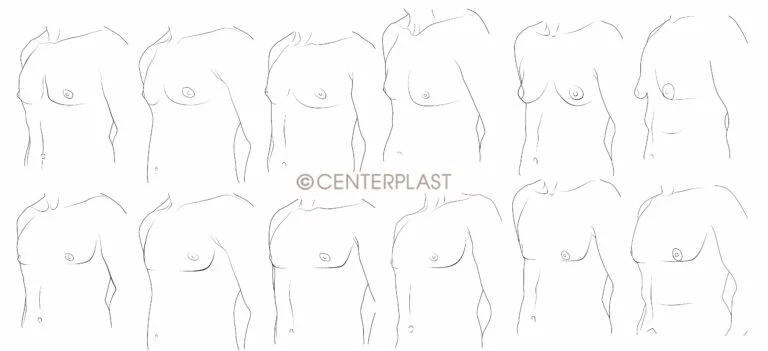
Different degrees of male breast development require different surgical techniques in order to achieve a flat male breast.
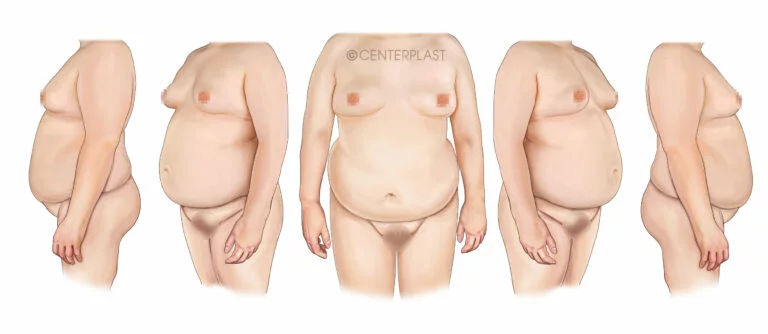
Greatly enlarged breasts in men from several angles. For a pleasing result, a correction should take into account the proportions of the body. In certain cases, a reduction of the nipple is also desirable.

Frequently asked questions
Male breast contours can be restored by an experienced specialist in a surgical procedure. You can get an initial cost estimate on our costs page. . The techniques and the effort required vary depending on the extent of the gynecomastia, the type of excess tissue (tissue of the mammary gland, fatty tissue, skin) and the health of the man to be treated. We will be happy to provide you with an exact price following a consultation. Whether health insurance covers the costs of gynecomastia treatment by plastic surgery depends on the individual case.
The correction of gynecomastia is an elective procedure and should be performed under the best possible conditions, i.e. without avoidable risks, in order to minimize swelling and ensure optimal healing. Frequently asked questions are answered in the run-up to aesthetic plastic surgery in the case of breast augmentation (female breast). In addition to answering the questions asked, a good doctor will of course also provide comprehensive information and preparation for the plastic surgery correction by the aesthetic surgeon.
- To clarify the causes, a blood test and a consultation with a specialist in endocrinology as well as an ultrasound examination of the breast and testicles are recommended.
- Any uncertainties about possible complications before the operation should be cleared up in the consultation beforehand. Of course, all alternative forms of treatment are presented to you.
- Gynecomastia cosmetic surgery is performed on an outpatient basis in the practice. An inpatient stay in a clinic is not necessary.
- In smokers, wound healing is delayed afterwards and the cosmetic results can be significantly worse. You should therefore refrain from smoking for two weeks before to four weeks after the planned breast reduction surgery.
- Blood-thinning medication (e.g. Thomapyrin®, ASA) must be discontinued at least 10 days before the operation. This must be done in consultation with your doctor.
- The discontinuation of vitamin preparations (A, E) and food supplements (St. John’s wort preparations, omega-3 fatty acids, etc.) must take place at least 4 weeks before the operation.
- Follow-up cost insurance should be taken out before aesthetic procedures are carried out.
- You can help to minimize the risk of inflammation during surgery by cleaning your breast with a disinfectant soap on the day of surgery (e.g. HiBiScrub® Plus by Mölnlycke, Octenisan® Wash Lotion by Schülke, Prontoderm® Shower Gel by B.Braun).
- After surgery, the ability to travel by air is limited. During the postoperative phase, i.e. in the six weeks following the operation, do not plan any air travel, either for business or pleasure.
Surgical correction of the male breast is a safe method of treatment. Nevertheless, there is no surgical gynecomastia treatment without risks that can arise. In the first 30 days after surgical correction, the complication rate is 2.1 percent. The complications that occur most frequently include inflammation in 1.3 percent of cases, softening of the wound edges in 0.3 percent of cases and bleeding requiring blood transfusion in 0.1 percent of cases. Diabetes, heart or liver disease increase the risk of complications 3 . In general, smokers, overweight or older patients are at a higher risk of surgery than non-smokers, normal-weight or younger men.
Every wound is a potential entry point for germs. Inflammation may require medical or surgical treatment. Cigarette smoking, even if it is stopped four weeks before the operation, has been shown to be associated with a higher risk of inflammation.
In order to minimize the risk of secondary bleeding, the doctor will discuss the intake of blood-thinning medication, vitamins and dietary supplements in detail during the personal consultation and ask about the current status. Surgical treatment of gynecomastia is possible if blood-thinning medication can be temporarily discontinued. Normal laboratory coagulation values do not rule out a bleeding tendency. To reduce the risk of bruising, adrenaline is injected into the surgical area. Fluctuations in blood pressure can cause bruising to develop in the first few days or even several days after breast surgery. Physical exertion should therefore be avoided for the first fourteen days.
By using gentle surgical and suturing techniques, the surgeon can help to ensure that the tissue heals well and quickly. Other factors such as advanced age, cigarette smoking, obesity, chronic diabetes, vascular calcification, medication (cortisone, Marcumar), shear forces and pressure can promote wound healing disorders. We advise against male breast surgery in the case of serious illnesses.
The aim of a good skin suture is to close the wound precisely, gently and without tension. The formation of new structural proteins as well as the alignment and cross-linking of the fiber scaffold takes up to a year. In the first few weeks, scars are slightly hardened, reddened, possibly painful or itchy and sometimes slightly raised above the skin level. As a rule, scars become pale, soft, painless and flat after a year.
Male breast correction can lead to irritation of the skin nerves. This affects the nerves of the nipple and the cutaneous nerves of the breast skin. This can lead to temporary numbness.
Despite all precautionary measures, lateral differences and contour irregularities cannot be ruled out. Pre-existing inequalities, a pronounced skin tightening or reduction of the breast make it difficult to achieve laterally equal results. A loss of elasticity of the skin and individually different scar healing processes can lead to an asymmetry of the scar. Correction is usually possible once the scar has matured. After correction of a male breast, excess volume on the abdomen may become more prominent. Your goals are discussed in detail beforehand in order to create an individual treatment plan that takes your body into account holistically.
With sufficient elasticity, the skin shrinks and adapts to the new body contours. If the natural shrinkage of sagging skin is not sufficient, excess skin folds can result. Skin tightening procedures can eliminate these wrinkles by reducing the size of the skin mantle.
Optimal aftercare is required for a perfect result.
- Immediately after the surgical procedure, which is performed on an outpatient basis in a special operating room at the practice, the attending physician will arrange regular appointments to check on your well-being. In addition, the surgical result is always checked.
- Elevating the upper body to around 30 degrees for 5 days is very beneficial for reducing swelling and wound healing. The elevated position should also be maintained during sleep.
- Previously fitted compression girdles (compression vests) should be worn continuously for three to six weeks after the operation.
- Showering is possible from the third postoperative day and should take place immediately before the wound check.
- As a rule, you can resume your usual everyday activities after five to seven days.
- Scar care (sun protection, scar massage, silicone pad) from the 3rd postoperative week onwards supports scar healing and thus helps to achieve inconspicuous scars.
- Sports activities, heavy work, saunas, swimming and sunbathing should be avoided for at least three weeks.
- Massage the scar several times a day for a few minutes from the third postoperative week onwards. Use a greasy cream, such as Bepanthen® Ointment or Linola® Fat. Pay attention to circular, longitudinal and transverse movements to the scar. These measures help to create an inconspicuous scar that is only noticeable on close inspection of the body area.
- Smoking increases the risk of inflammation and thrombosis. Avoid tobacco smoking and e-cigarettes after the operation.
Cardio training and muscle building should be resumed after three to six weeks at the earliest. Short walks stimulate the circulation and are therefore very helpful. In rare cases, pain medication may still need to be taken after the third day of surgery. You can find out more details by talking to your doctor. As the external wounds are very inconspicuous, it can be very tempting to resume your usual strength training after just a few days. The body needs at least two weeks rest. Depending on the degree of swelling, a longer period of rest may also be necessary.

AUTHOR
Dr. Stéphane Stahl
We provide you with extensive expert knowledge in order to select the best possible treatment path together with you.
Privatdozent Dr. med. Stéphane Stahl is the former Director of the Clinic for Plastic, Reconstructive and Aesthetic Surgery / Hand Surgery at Lüdenscheid Hospital. Dr. Stahl studied medicine at the Universities of Freiburg and Berlin.
He passed the European specialist examination for plastic and aesthetic surgery in 2011 and the German specialist examination in 2012. This was followed by further specialist qualifications and additional qualifications (including quality management, medical didactics, physical therapy, emergency medicine, laser protection officer, hand surgery) as well as prizes and awards.
In 2015, he completed his habilitation in plastic and aesthetic surgery in Tübingen. He is an experienced microsurgeon, sought-after expert witness and regular speaker at specialist congresses. Following a multi-stage selection process, Stéphane Stahl became a member of the American Society for Aesthetic Plastic Surgery (ASAPS), one of the world’s largest and most influential specialist societies for aesthetic surgery.
His authorship includes numerous articles in prestigious peer review journals and standard surgical textbooks.
You might also be interested in

Personal advice
We take time for you and offer you customized advice and treatment for your individual result.
